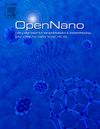Material informatics-driven insights into brain cancer nanocarriers: A bibliometric comparison of PLGA vs. liposomes
Q2 Pharmacology, Toxicology and Pharmaceutics
引用次数: 0
Abstract
This study explores a comparative analysis of PLGA nanoparticles and liposomes as potential carriers for brain cancer drug delivery, with a special focus on how material informatics enhances their design, biocompatibility, and drug release profiles to improve treatment efficacy and contribute to sustainable health outcomes.
The investigation employed a bibliometric analysis using Scopus and VOSviewer to uncover the role of material informatics in optimizing these nanocarriers. The analysis revealed that material informatics, particularly through the application of machine learning and molecular dynamics simulations, significantly optimizes the performance of both PLGA nanoparticles and liposomes.
The results highlighted distinct strengths of each nanocarrier: PLGA nanoparticles excel in biodegradability, while liposomes offer superior drug encapsulation capabilities. However, material informatics techniques bridged these enhancing drug release kinetics, stability, and biocompatibility. These improvements are crucial for effective delivery across the blood-brain barrier, a major challenge in brain cancer treatment.
The integration of computational modelling, machine learning, and high-throughput screening enabled by material informatics is shown to be a key factor in advancing the design and optimization of these nanocarriers. By leveraging these tools, researchers can develop more personalized and efficient drug delivery systems tailored to address the specific challenges of glioblastoma therapy, ultimately contributing to sustainable health outcomes

材料信息学驱动的洞察脑癌纳米载体:PLGA与脂质体的文献计量学比较
本研究探讨了PLGA纳米颗粒和脂质体作为脑癌药物递送的潜在载体的比较分析,特别关注材料信息学如何增强其设计,生物相容性和药物释放概况,以提高治疗效果并促进可持续的健康结果。本研究使用Scopus和VOSviewer进行文献计量学分析,揭示材料信息学在优化这些纳米载体中的作用。分析表明,材料信息学,特别是通过机器学习和分子动力学模拟的应用,显著优化了PLGA纳米颗粒和脂质体的性能。结果突出了每种纳米载体的独特优势:PLGA纳米颗粒具有生物可降解性,而脂质体具有优越的药物封装能力。然而,材料信息学技术连接了这些增强药物释放动力学,稳定性和生物相容性。这些改进对于有效地通过血脑屏障是至关重要的,这是脑癌治疗的一个主要挑战。计算建模、机器学习和材料信息学实现的高通量筛选的集成被证明是推进这些纳米载体设计和优化的关键因素。通过利用这些工具,研究人员可以开发出更加个性化和高效的药物输送系统,以解决胶质母细胞瘤治疗的特定挑战,最终为可持续的健康结果做出贡献
本文章由计算机程序翻译,如有差异,请以英文原文为准。
求助全文
约1分钟内获得全文
求助全文
来源期刊

OpenNano
Medicine-Pharmacology (medical)
CiteScore
4.10
自引率
0.00%
发文量
63
审稿时长
50 days
期刊介绍:
OpenNano is an internationally peer-reviewed and open access journal publishing high-quality review articles and original research papers on the burgeoning area of nanopharmaceutics and nanosized delivery systems for drugs, genes, and imaging agents. The Journal publishes basic, translational and clinical research as well as methodological papers and aims to bring together chemists, biochemists, cell biologists, material scientists, pharmaceutical scientists, pharmacologists, clinicians and all others working in this exciting and challenging area.
 求助内容:
求助内容: 应助结果提醒方式:
应助结果提醒方式:


